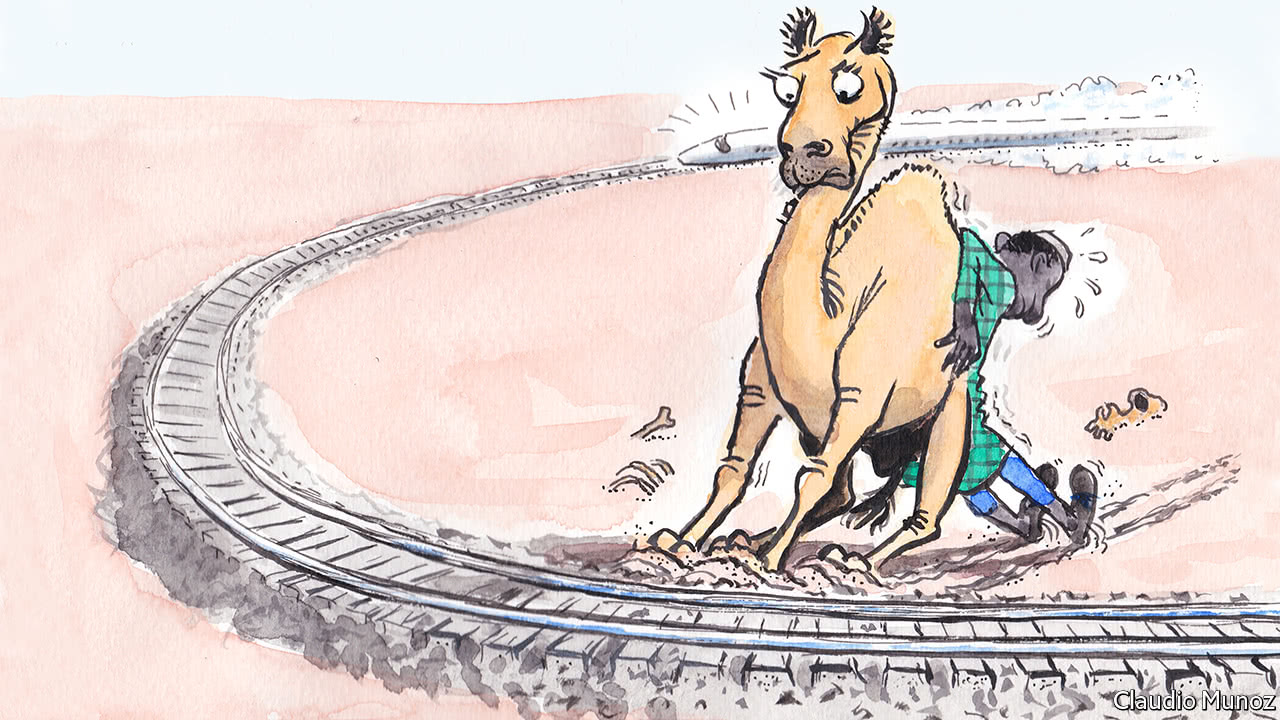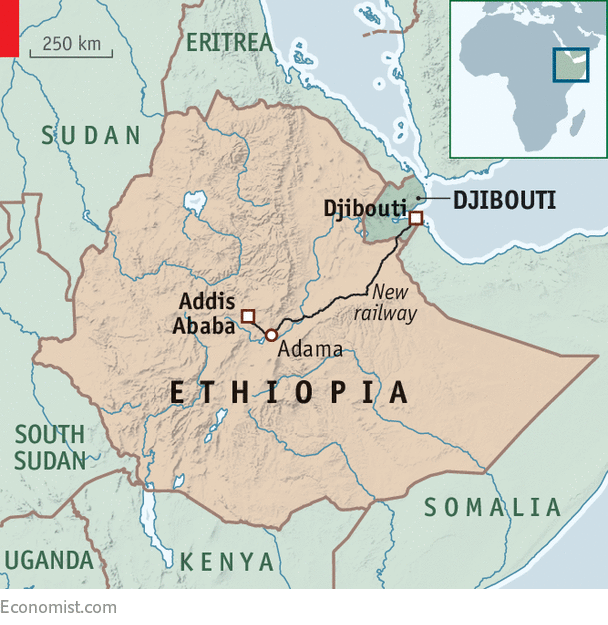Danger, camels crossing
Camel trains are holding up Ethiopia’s new railway line
Compensating the owners of camels killed by trains with twice their market value creates perverse incentives

Print edition | Middle East and AfricaFeb 10th 2018| ADAMA
“MORE than any other technical design or social institution,” wrote the late British historian, Tony Judt, “the railway stands for modernity.” But the road to modernity can be a bumpy one. So it was at the opening of the world’s first steam passenger railway in 1830, when a dignitary in Liverpool was crushed by a train. So too in Saudi Arabia today, where construction of a high-speed railway was almost derailed by advancing sand dunes. And also in Ethiopia, where Africa’s newest major railroad has been frustrated by one of civilisation’s earliest forms of transport, the camel.
Since the start of commercial operations last month, at least 50 animals have been killed crossing the new Chinese-built line connecting Addis Ababa, the capital of landlocked Ethiopia, with the port of neighbouring Djibouti. Of these, 15 were camels flattened in a single collision, according to Tilahun Farka, the head of the jointly state-owned Ethio-Djibouti Railways, which manages the locomotives.

Camel herders in the arid scrubland east of Addis Ababa report many more such incidents over the previous year of trial operations. Nado, a 21-year-old nomad on the outskirts of Adama, says his family lost 35 camels in an especially bloody collision. “Some of my brothers lost all the camels they have,” he complains. And it is not just camels. Donkeys, cows, sheep and goats have also been hit, though it is the ungainly camels that are most at risk. “The train never stops,” says Nado. “It just hits and passes on.”
For the Ethiopian government this is a headache. The train, which is supposed to slash transportation times to the coast from two days to ten hours, is operating at around half speed. Mr Tilahun says his company pays out 30,000 Ethiopian birr ($1,089) for each camel, twice the market price. So a profit-maximising camel-owner would chivvy the whole herd onto the tracks. This is perhaps why there have been so many collisions.
The problem is also technical. It was deemed too expensive to build an elevated track, such as the one that runs through Tsavo National Park in neighbouring Kenya, allowing wildlife to cross freely. Ethiopia opted instead for level crossings and some tunnels. But herders complain that there are too few of these, or that their camels refuse to use them. Some say they do not know where to go for compensation, and often do not get paid what is owed.
In most parts of the world fencing is used to prevent dangerous crossings. But for eastern Ethiopia’s large nomadic population, mobility matters. Fences built along some sections of track have been torn down by nomads who regard distant officials with suspicion. Mr Tilahun hopes all Ethiopians will eventually view the railway as a “national resource”. Nomads may be the last to feel this way.This article appeared in the Middle East and Africa section of the print edition under the headline"Danger, camels crossing"



.jpg)
.jpg)



0 comments:
Post a Comment